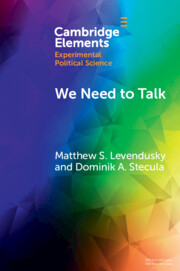Element contents
We Need to Talk
Published online by Cambridge University Press: 09 November 2021
Summary
Keywords
- Type
- Element
- Information
- Online ISBN: 9781009042192Publisher: Cambridge University PressPrint publication: 02 December 2021
Bibliography
- 13
- Cited by



